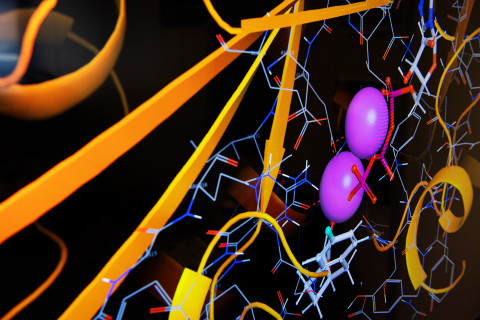In her doctoral thesis, Prasanthi Medarametla, MSc (Pharm), validated two novel protein targets involved in bacterial infections and found that these alternative drug targets targeting virulence are a better option in current antibiotic resistance crisis. The public examination will be held in English at Kuopio Campus and online on 8 October 2020.
Several bacteria are resistant to existing antibiotic treatments and therapies. The World Health Organization (WHO) has been raising awareness to reduce unnecessary antibiotic use and addressed the need for the development of novel antibacterial drugs. In 2019, the World Health Organization (WHO) estimated that 700,000 people die every year due to drug-resistant diseases and if no action is taken, the number could be 10 million deaths each year by 2050.
It is clear that alternative treatment options or novel therapeutic strategies are needed to fight this resistance. The EU- Horizon 2020 ITN project “INTEGRATE” has been working towards this goal. The main focus of the INTEGRATE was to validate novel targets involved in the virulence of Gram-negative bacteria. As part of her PhD project, Medarametla validated two novel targets, LsrK kinase and Malate synthase G, both involved in bacterial virulence. However, these proteins are not essential for bacterial growth which makes them attractive targets for the antibacterial drug design and potentially evading the resistance.
“Targeting these proteins doesn’t kill bacteria but reduces the virulence of bacteria and pathogenesis allowing our immune system to do the rest,” Medarametla explains.
LsrK kinase is an autoinducer-2 kinase involved in the bacterial communication process called quorum sensing (QS). QS controls bacterial behaviours such as motility, virulence factor secretion, and biofilm formation using signalling molecules called autoinducers (AI). Phosphorylation of AI’s by LsrK kinase makes it an attractive target in drug discovery. In the current thesis, the 3D structure was modelled using computational approaches and used successfully to identify first inhibitors against this protein. The modelled 3D structure was found to be similar in the protein architecture and the potential binding site compared with the recently published, experimentally solved protein structure.
Malate synthase G (MSG) was another target in this study, computationally validated for its druggability. MSG is one of the shunt enzymes i.e. an alternative metabolic pathway to TCA cycle adopted by bacteria during the infection scenarios. The active site and solvent composition associated with MSG were predicted using in silico approaches to aid the structure-based drug design.
These studies highlight some possible alternative strategies to the traditional antibiotic mechanisms such as bactericidal or bacteriostatic mechanisms. The importance of computational approaches in drug design is also shown.
The doctoral dissertation of Prasanthi Medarametla, Master of Science (Pharmacy), entitled Identification and design of new antibacterial agents using computational approaches, will be examined at the Faculty of Health Sciences. The Opponent in the public examination will be Professor Matthias Rarey of the University of Hamburg, and the Custos will be Professor Antti Poso of the University of Eastern Finland. The public examination will be held in English.
Photo available for download at https://mediabank.uef.fi/A/UEF+Media+Bank/37802?encoding=UTF-8


